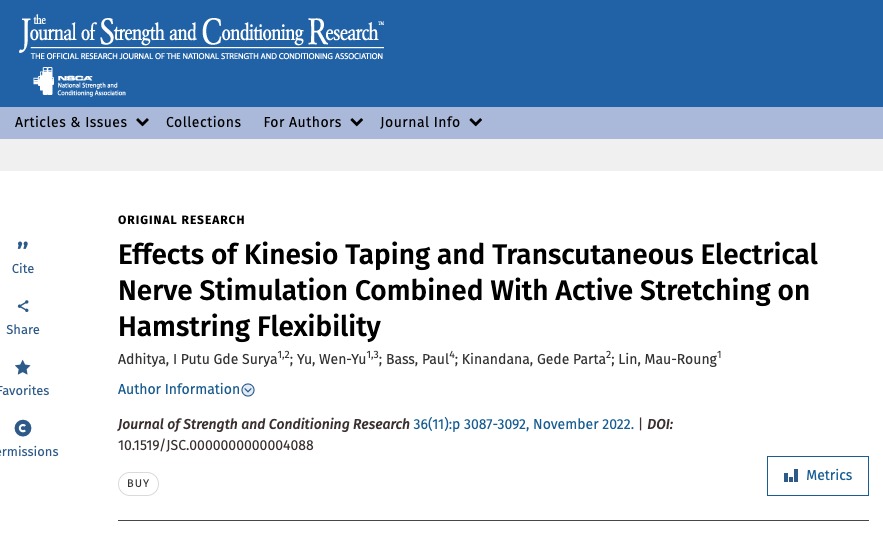The addition of Kinesio Taping (KT) and Transcutaneous Electrical Nerve Stimulation (TENS) combined with Active Stretching (AS) Can Increase Hamstring Muscle Flexibility
Researchers from the Faculty of Medicine, Udayana University, led by I Putu Gde Surya Adhitya, S.Ft., M.Fis., Ph.D., succeeded in publishing research results in one of the leading journals in the field of Physiotherapy. An article entitled “Effects of Kinesio Taping and Transcutaneous Electrical Nerve Stimulation Combined With Active Stretching on Hamstring Flexibility” was published in the Journal of Strength and Conditioning Research.
Dr. Adhitya, et al, explained that the flexibility of the hamstring muscles is very important for athletes who participate in sports. The hamstring muscles contract eccentrically during basic human movements (eg, walking, running, jumping, and sprinting), excessive force or overstretching can cause injury, especially in individuals with short muscle fibers. Short hamstring syndrome (SHS) is a condition in which stretching pain is the main symptom, which reduces the range of action of the hamstring muscles. Short hamstring syndrome is associated with a number of musculoskeletal disorders, such as low back pain, hamstring injuries, patellofemoral pain syndrome and plantar fasciitis.
The respective interventions of AS, KT with AS, and TENS with AS improved SHS in athletes over a 4-week period. Although the combination of KT and TENS with AS significantly increased hamstring muscle flexibility more than AS alone. Based on these results, exercise practitioners can implement KT and AS or TENS and AS interventions to achieve optimal flexibility and reduce tension in the hamstring muscles. Further investigation in other populations is needed to confirm the results.
The full text of the article can be accessed via: https://journals.lww.com/nsca-jscr/Abstract/2022/11000/Effects_of_Kinesio_Taping_and_Transcutaneous.14.aspx




UDAYANA UNIVERSITY